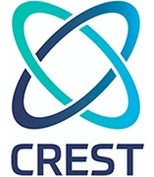
Cyber Risk Assessments
Kroll's cyber risk assessments and advisory services deliver actionable recommendations to improve security, using industry best practices & the best technology available.
When it comes to data breach prevention, what you don’t know can hurt you. Your company faces IT risk daily—whether you’re fending off internal threats or enhancing protection against external intrusions.
How well are you balancing your need to lock down data with tighter security controls, while providing your team with easy access to the information that drives your success? You can never be sure of your security stance unless you’re conducting periodic security assessments.
Cyber Risk Assessments - What's Included?
Our Cybersecurity Risk Assessments include a detailed review of the information security program—from policies and procedures to technical controls, including people, processes and technologies. We conduct a series of interviews with internal stakeholders, across both technical and business teams, to identify areas for improvement to mature the organization's information security program, using the NIST Cybersecurity framework as guidance.
The objective is to review the maturity of an organization’s information security program, with an emphasis on its ability to defend against and respond to modern cybersecurity threats affecting its information assets and mitigate the risk of suffering a security breach.
At the conclusion of an assessment, clients will receive a summary report designed to communicate security posture to senior management, including an assessment of the organization’s maturity level and an outline of critical risks identified. Additionally, a technical details report will be provided, with relevant and actionable recommendations prioritized by likelihood, impact and overall risk so the organization knows what to remediate first.
At Kroll, we apply years of data breach prevention expertise to our cyber risk assessments. Our experts are Certified Information Systems Auditors, Certified Information Security Managers, Certified Information Systems Security Professionals and Certified Ethical Hackers. They are ex-FBI agents, CTOs, CISOs, IT and security directors, cyber investigators, infrastructure managers, forensic computer scientists and networking professionals—people who speak the same language as your internal IT staff and who can perform the in-depth analysis your busy teams don’t have the time or resources to conduct.
Kroll’s enterprise security risk management experts also offer threat and vulnerability assessments, which are routinely conducted at corporate headquarters, executive residences, health care facilities, hospitals, schools, universities, research and development labs, manufacturing facilities, distribution centers and more.
Security Assessments Accurately Define Your Potential for Exposure
Performing security assessments for global clients from nearly every industry and government agency, Kroll’s information security experts employ tested techniques, industry best practices and the best of commercial and proprietary technologies to:
- Identify, monitor and analyze information-related vulnerabilities effectively
- Help you determine methods to manage or resolve data security risks
- Spot potential data privacy and security compliance issues
- Prioritize remediation steps into an effective plan based on your company’s specific goals, schedule and budget
Information Risk Assessments Advisory Services: One Size Does Not Fit All
At Kroll, we recognize the key to successful risk assessment and data breach prevention is achieving and maintaining the right level of security for your organization. Our data breach prevention experts and security advisors offer a full range of internal and external risk assessments to evaluate your systems, applications and processes for a variety of vulnerabilities.
Our range of assessments includes:
Ransomware Preparedness Assessments
Technical Security Assessments
Microsoft 365 Email Security Assessments
Identifies areas for improvement in a client’s email security defenses. Check out this M365 business email compromise case study.
Active Directory Security Assessments
Microsoft Azure Review
Google Workspace Email Security Assessments
AWS Cloud Security Assessments
Google Cloud Security Assessments
VMWare Security Assessments
Industry Accreditation
CREST has accredited Kroll as a global Penetration Testing provider.

Stay Ahead with Kroll
Cyber and Data Resilience
Kroll merges elite security and data risk expertise with frontline intelligence from thousands of incident response, regulatory compliance, financial crime and due diligence engagements to make our clients more cyber resilient.
Microsoft 365 Security Assessment
Fortify your defenses and maximize your technology investment with a Microsoft 365 security assessment from Kroll.
Cyber Litigation Support
Whether responding to an investigatory matter, forensic discovery demand, or information security incident, Kroll’s forensic engineers have extensive experience providing litigation support and global eDiscovery services to help clients win cases and mitigate losses.
Cyber Risk Retainer
Kroll delivers more than a typical incident response retainer—secure a true cyber risk retainer with elite digital forensics and incident response capabilities and maximum flexibility for proactive and notification services.
24x7 Incident Response
Kroll is the largest global IR provider with experienced responders who can handle the entire security incident lifecycle.
Data Breach Notification Services
Kroll’s data breach notification, call centers and monitoring team brings global breach response expertise to efficiently manage regulatory and reputational needs.





